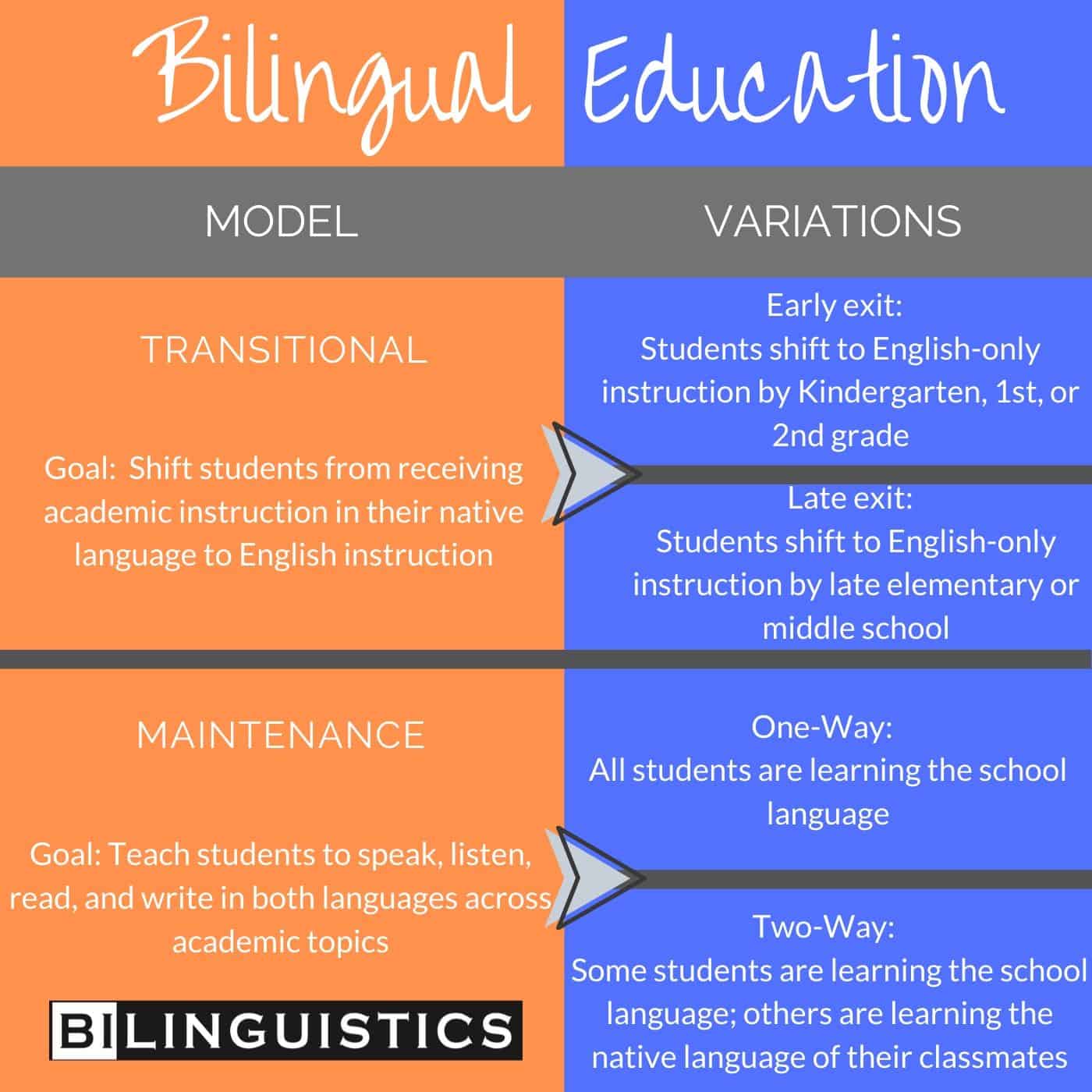For those of us who work in the schools we hear the term Bilingual Education and it is often accompanied with other descriptors, such as two-way, early exit, transitional, and so on. Today, we’re going to break these bilingual education models down for you.
Last year one of our blog readers asked us to define Bilingual Education in border towns and we heard from three educators about how much programs vary along the border. This time, we’re going to focus on the terminology and what it means. There is an abundance of research both supporting and criticizing different models of bilingualism. We won’t dive into the research here. We’ll simply focus on what the different types of bilingual education models look like.
Let’s start with Bilingual Education in and of itself. Bilingual education simply means  teaching academic content in two languages. There are a number of ways to do that and we’re going to give you the quick summary.
teaching academic content in two languages. There are a number of ways to do that and we’re going to give you the quick summary.
Bilingual Education Models
First, there are Transitional Programs and Maintenance Programs in the world of Bilingual Education. The goal of a transitional program is to gradually shift students from their home language to the school language, and eventually have students receiving all academic instruction in English.
Transitional programs can be Early Exit Programs or Late Exit Programs. Most Early Exit programs shift students out of receiving academic instruction in their native language by Kindergarten, first grade or second grade. The Late Exit Programs generally provide native-language academic instruction until 3rd, 4th, or 5th grades.
A maintenance program, on the other hand, has the goal of teaching students to read, write, speak, and listen in both languages of the program. Many of these programs extend all the way through elementary school and sometimes into middle school even high school. These programs are often referred to as Dual Language Programs and can vary in a number of ways. These programs can be One-Way or Two Way.
A One-Way Dual Language Program includes all students who speak a native language other than the primary school language. A two-way dual language program includes some students who speak a native language other than the primary school language and some students who speak the school language as their native language who are learning the native language of their fellow students.
As an example, the elementary school my children attended has a two-way Chinese dual language program. Native speakers of Mandarin make up about 1/3 of the students in the program and native speakers of English make up about 2/3 of the students. The ideal is obviously ½ and ½ but that is not always easy to accomplish.
Another way dual language programs vary is in when each language is used. Some programs divide the languages up by subjects while others shift languages for mornings and afternoons or alternate days.
To make things a little clearer, we created this beautiful graphic summarizing these details. Enjoy!
Resources on Bilingual Education
For great input about how to use information about different types of bilingual education programs in the speech-language evaluation process, be sure to catch our colleague Laura Finkel at the 2020 Texas Speech-Language Hearing Association Convention in Houston, TX.
Bilingual Education Program Models: A Framework for Understanding
Colorín Colorado: A bilingual site for educators and families of English language learners




